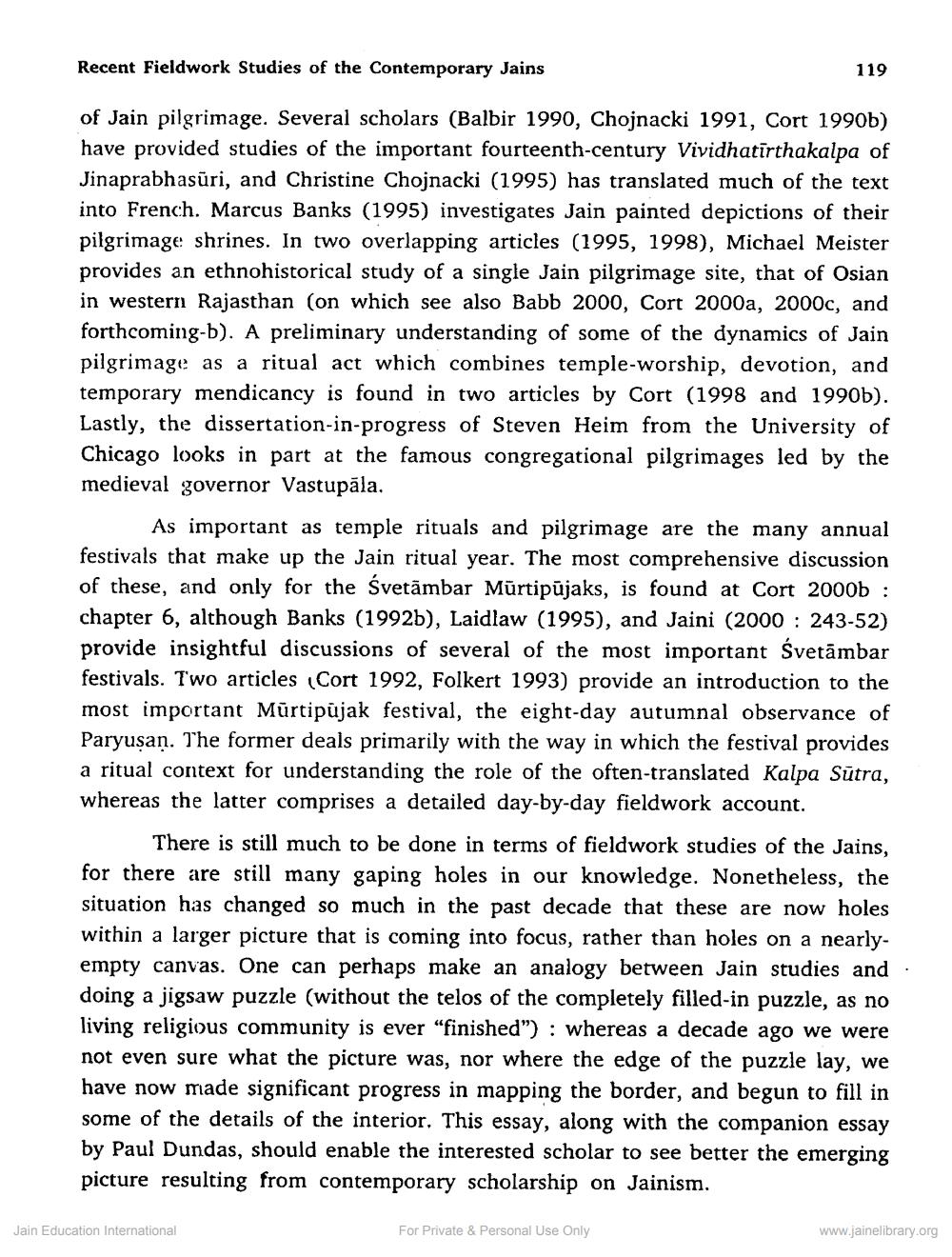________________
Recent Fieldwork Studies of the Contemporary Jains
119
of Jain pilgrimage. Several scholars (Balbir 1990, Chojnacki 1991, Cort 1990b) have provided studies of the important fourteenth-century Vividhatirthakalpa of Jinaprabhasūri, and Christine Chojnacki (1995) has translated much of the text into French. Marcus Banks (1995) investigates Jain painted depictions of their pilgrimage shrines. In two overlapping articles (1995, 1998), Michael Meister provides an ethnohistorical study of a single Jain pilgrimage site, that of Osian in western Rajasthan (on which see also Babb 2000, Cort 2000a, 2000c, and forthcoming-b). A preliminary understanding of some of the dynamics of Jain pilgrimage as a ritual act which combines temple-worship, devotion, and temporary mendicancy is found in two articles by Cort (1998 and 1990b). Lastly, the dissertation-in-progress of Steven Heim from the University of Chicago looks in part at the famous congregational pilgrimages led by the medieval governor Vastupala.
As important as temple rituals and pilgrimage are the many annual festivals that make up the Jain ritual year. The most comprehensive discussion of these, and only for the Svetāmbar Mūrtipūjaks, is found at Cort 2000b : chapter 6, although Banks (1992b), Laidlaw (1995), and Jaini (2000 : 243-52) provide insightful discussions of several of the most important Śvetāmbar festivals. Two articles Cort 1992, Folkert 1993) provide an introduction to the most important Mūrtipūjak festival, the eight-day autumnal observance of Paryusan. The former deals primarily with the way in which the festival provides a ritual context for understanding the role of the often-translated Kalpa Sutra, whereas the latter comprises a detailed day-by-day fieldwork account.
There is still much to be done in terms of fieldwork studies of the Jains, for there are still many gaping holes in our knowledge. Nonetheless, the situation has changed so much in the past decade that these are now holes within a larger picture that is coming into focus, rather than holes on a nearlyempty canvas. One can perhaps make an analogy between Jain studies and . doing a jigsaw puzzle (without the telos of the completely filled-in puzzle, as no living religious community is ever “finished") : whereas a decade ago we were not even sure what the picture was, nor where the edge of the puzzle lay, we have now made significant progress in mapping the border, and begun to fill in some of the details of the interior. This essay, along with the companion essay by Paul Dundas, should enable the interested scholar to see better the emerging picture resulting from contemporary scholarship on Jainism.
Jain Education International
For Private & Personal Use Only
www.jainelibrary.org




